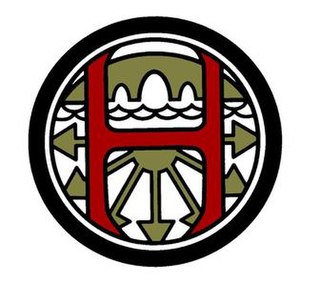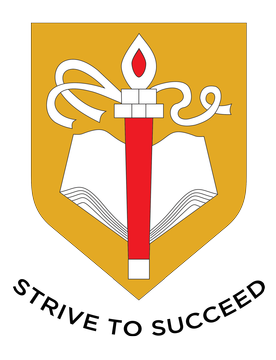The Kings of Wessex Academy, formerly known as The Kings of Wessex School, is a coeducational secondary school located in Cheddar, Somerset, England. As of 2015, it had 1,176 students aged 13 to 18, of all genders and all ability levels including 333 in the sixth form. In November 2016, the academy became part of the Wessex Learning Trust which incorporated eight academies from the surrounding area. Kings is a Church of England school.

Bramhall High School is a larger than average, nine form entry, comprehensive high school for 11 to 16 year olds in Bramhall, Stockport, England.

Outwood Academy Bydales is a mixed secondary school with academy status in Marske-by-the-Sea, North Yorkshire, England. It has a comprehensive admissions policy and in 2019 had an enrolment of 839 pupils.

Kingsdale Foundation School (KFS) is a British mixed secondary school with academy status in West Dulwich, London, with an age range of 11–19 (Year 7 to sixth form). Admissions to the school are coordinated by the Southwark London Borough Council as part of the Pan London Admissions Arrangements. However, many students live in surrounding boroughs, such as Lambeth, Lewisham and Croydon.

Highfields School is a coeducational secondary school and sixth form located in Matlock, Derbyshire, England. At the time of its September 2012 Ofsted inspection, the school had 1175 pupils on roll aged 11–18, with 215 in the sixth form. It is split across two sites in the town 1.8 miles apart.
The Bicester School is a mixed, multi-heritage, secondary school, with 963 students. It is situated in Bicester, Oxfordshire, England, and occupies a 32-acre (130,000 m2) site leading off Queens Avenue.

Thornden School is a secondary school with academy status in Chandler's Ford, Hampshire. It is an 11-16, mixed specialist Arts College with Science as the second specialism. There are 1400 pupils on roll and 11 tutor groups of around 30 pupils in each tutor group, to form year groups of around 300 people. The head teacher is Su Whelan, who in 2016 succeeded Robert Sykes (CBE) who had held the position for over 20 years.
North Oxfordshire Academy is a coeducational academy school in Banbury, Oxfordshire, England. It opened in September 2007, replacing the comprehensive Drayton School. It caters for children and young adults between the ages of 11 and 18.

Theale Green School is a coeducational secondary school and sixth form with academy status, located in the village of Theale, Berkshire, England.

Portslade Aldridge Community Academy (PACA) (formerly Portslade Community College) is a secondary school led by Dr Mark Poston with academy status located in Portslade, in the city of Brighton and Hove, England. It was rated Good by Ofsted in December 2016. The school has around 900 pupils. It is part of the Aldridge Education multi-academy trust.
The Coleshill School is a school with academy status in Coleshill, Warwickshire, England, founded in 1520.

Ryde Academy is an academy status secondary school, including sixth form, located in Ryde on the Isle of Wight, England.
The Oxford Academy is a coeducational secondary school and sixth form located in Littlemore, Oxford, England. Formerly Peers School, it was re-opened as an Academy in September 2008 and is the state secondary school for The Leys, Rose Hill and Littlemore..
Greyfriars Catholic School is a mixed Roman Catholic secondary school with academy status, located in Cowley, Oxfordshire, England. Until summer 2022, it was called St Gregory the Great Catholic School.

The Baverstock Academy was a mixed secondary school and sixth form college, located on the southern edge of the Birmingham suburb of Kings Heath.

Berry Hill High School and Sports College was a mixed, secondary school in Berry Hill, Stoke-on-Trent, one of the two predecessors to St Peter's Academy.
Duke's Aldridge Academy is a co-educational secondary school located in the Northumberland Park ward of Tottenham in the London Borough of Haringey, United Kingdom.
Winton Community Academy is a mixed secondary school located in Andover in the English county of Hampshire.

The Charles Dickens School is a co-educational secondary modern school located in Broadstairs in the English county of Kent. The school is named after Charles Dickens, the 19th-century writer and social critic. It is one of six non-selective schools on the Isle of Thanet, physically isolated corner of Kent.

Hermitage Academy is a mixed secondary school and sixth form located in Chester-le-Street, County Durham, England. The current executive headteacher is Dr Janice Gorlach, appointed in September 2019 after the resignation of Miss Felicity Smith. Mr Darren Stewart has also been appointed as the School’s Headteacher. It is currently sponsored by North East Learning Trust (NELT), a multi-academy trust with partner & sponsor schools across North East England, including Academy at Shotton Hall and Teesdale School.












